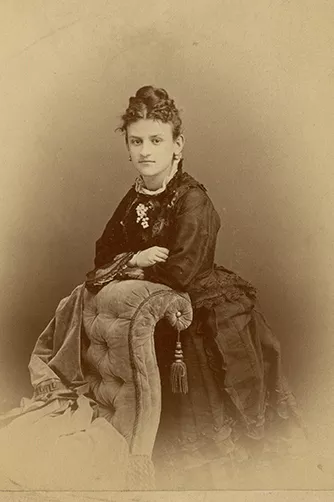Physical Culture
How early Bryn Mawr navigated the hotly debated topic of health for college women.
As the student-organized digital exhibition Who Built Bryn Mawr? A Rough Draft in Stone, 1872–1894 makes clear, at the time of the College’s opening, the health of college women was a hotly debated topic.
This conversation was dominated by pseudo-medical theories that proposed that demanding intellectual work compromised the ability of women to have children by absorbing too much of the vital energy necessary for effective reproductive development. There was also a concern that rigorous physical exercise would make a woman masculine.
Given the presumption of women’s fragility, documents from this early period indicate that the founders of Bryn Mawr had only a vague vision for physical culture on campus. Francis T. King, the first president of the Board of Trustees, proposed locating a gymnasium in the basement of Merion Hall, suggesting a lack of priority for athletics. The earliest campus plan provided for a field, annotated as the “playground,” where students could exercise in fair weather.
By the time the campus opened, though, the College had begun to rely on the advice and
training of Dr. Dudley Allen Sargent, a pioneer in physical education and the director of Harvard’s Gymnasium. Sargent designed a rigorous curriculum in physical culture and asserted not only that women were not only capable of exercising like men, but also that it was beneficial to their overall health. In 1881, he opened the Sargent School of Physical Education, which taught women how to run gymnasiums and physical education programs.
Bryn Mawr was an early adopter of Sargent’s theories, recruiting a graduate of the school, Carolyn Ladd, to be the gym directress in 1885. At the time of Bryn Mawr’s opening, Sargent was relatively unknown, and his ideas were considered cutting edge. By the early 20th century, he was nationally renowned. While Sargent’s ideas were considered progressive, he still emphasized differences between the sexes and claimed that women were physically inferior to men.
Who Built Bryn Mawr? is an ongoing project that supports research and curatorial opportunities for students interested in changing the way the College understands its history.
Published on: 06/02/2023

